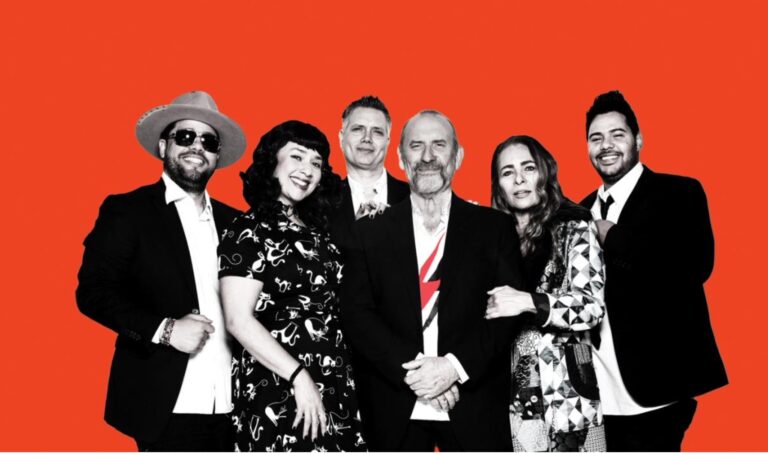
SISTER HOODS
Who says same-sex civil unions never last? As Lord Mayor Clover Moore will be the first to tell you: Sydney and San Francisco have been hitched since 1968, when our two global metropolises were officially declared Sister Cities. Before that we had maintained a long distance relationship for more than a century, our two Pacific port cities swapping sailors and seamen of all sorts since the days of the Australian and Californian gold rushes in the 19th century. In the lead up to this year’s Mardi Gras festivities, Clover will mark our sister city partnership by officially opening “San Francisco Place” in a corner of the relatively new Harmony Park in Surry Hills.
Sydney and San Francisco first registered our relationship at our respective city halls in1968. That year the City of Sydney was in Administration. NSW Premier Bob Askin’s corrupt, conservative government had dismissed the democratically elected local council (as Bob Carr would do in 2004) and the City was divided into smaller, developer-friendly fiefdoms. Half of Paddington and Newtown were carved from the City to weaken Labor’s hold over development in the CBD. The Askin-appointed administration entered into a sister city partnership with San Francisco. At first it was an unholy alliance: on the other side of the Pacific in San Francisco in 1968 a developer-friendly mayor, Joe Alioto, took control of City Hall, pushing through a raft of changes that would alter the City’s downtown skyline. Like Askin, there were rumours that Alioto maintained clandestine relations with organised crime, and both openly flouted their sympathies for property developers. Supported by financial district developer interests, Alioto approved the City’s landmark Transamerica Pyramid. Currently the tallest skyscraper on the skyline, when the building was approved in 1968 it exceeded existing height limits in the City against the fierce opposition of San Francisco’s only independent alternative newsweekly, the Bay Guardian and the local community, who objected to the Manhattanisation of San Francisco. After it was completed in 1972, the height of the Transamerica Pyramid set a precedent for the height of future down town developments. Over the same period, construction of Sydney’s own landmark Opera House stalled as the Askin government cut costs to undermine the previous Labor government’s project. The Sydney Opera House was finally completed one year after San Francisco’s Transamerica Pyramid in 1973.
Two score and two years after San Francisco and Sydney’s city fathers tied the urban knot, our longterm partnership is celebrated in each city’s vibrant gay village. What began as a handshake between developer friendly Pacific Rim cities has morphed into a celebration of gay pride. Ten years after the sister city relationship was formed in 1978, Sydney’s first gay pride march took place down Oxford Street, and in San Francisco Harvey Milk was proclaimed Mayor of Castro Street (representing a district with the population of Clover Moore’s entire City of Sydney) when he was elected as the first openly gay Supervisor at City Hall. Nowadays, both Sydney and San Francisco feature prominently on the international gay party circuit and the city partnership is celebrated in that context. In explaining its proposal to establish San Francisco Place, the Council said it would strengthen “ties between our cities’ gay, lesbian, bisexual and transgender communities. It will also become a meeting point for official ceremonies between Sydney and San Francisco”.
Just past the Surry Hills police bunker on Goulburn Street and across the street from a towering row of residential and commercial high-rises, the likes of which would never see the light of day in any San Francisco neighbourhood, San Francisco Place will serve as a place to sit and contemplate our Odd Couple status. Look past a strip of gay bars, rolling city hills and stunning water views and the two cities have grown miles apart over the last four decades. In 1968 Askin dreamed of building freeways through Newtown and Glebe and bulldozing poor urban neighbourhoods such as Woolloomoloo and the Rocks to build upward, leading to green bans in 1971, preserving parts of the inner city. Community campaigns gave way to powerlessness during the 1980s and the 1990s, as subsequent state governments usurped planning control over inner Sydney, bypassing the local citizenry altogether. First at Darling Harbour and then in Pyrmont and Ultimo (now in Redfern-Waterloo and Barangaroo) the State decreed massive redevelopment of the inner city over the feeble protests of local residents. Throughout the 1980s and 1990s, Sydney expanded as an international financial hub, building ever skyward. Meanwhile local government was disembowelled as the State government redrew City boundaries to suit its political ambitions and developer-driven aims.
While Sydney has pumped up like a gym queen on steroids, San Francisco has controlled downtown development and preserved its neighbourhood precincts. During the ‘60s and ‘70s San Francisco faced the same redevelopment pressures as Sydney, with massive freeway bypasses and wholesale devastation of houses to make way for apartment blocks. The year Sydney and San Francisco became sister cities, Alioto waged war on an invasion of hippies into the Haight Ashbury by bringing in the developers’ bulldozers. During the ‘80s and ‘90s while Sydney Manhattanised, San Francisco’s residents fought back, passing initiatives that put strict limits on high rise developments in the Financial District and set planning priorities that protected affordable housing, neighbourhood character and small businesses.
The result has been that in San Francisco the city’s population growth has been fiercely guarded: the inner city population has only grown by 10 percent over the last 40 years. The City’s vast gay population has done its bit to ensure San Francisco experiences zero population growth. The Bay Area’s vast population growth occurred outside the inner city in the region’s suburban counties, where satellite urban centres mushroomed. By comparison, the population of Sydney’s inner suburbs (including the City of Sydney and surrounding inner city local government areas) have grown by 15 per cent annually since 1995, making inner Sydney one of the fastest growing areas in Australia. Sydney has grown up and out. Over the next 40 years, Sydney’s metropolitan population is predicted to grow from 4 to 7 million people. The State government’s urban strategy is to squeeze 70 per cent of that growth into existing urban centres, with the State government likely to impose more development projects on a disempowered and often disinterested inner city populace. They wouldn’t put up with it in San Francisco.









